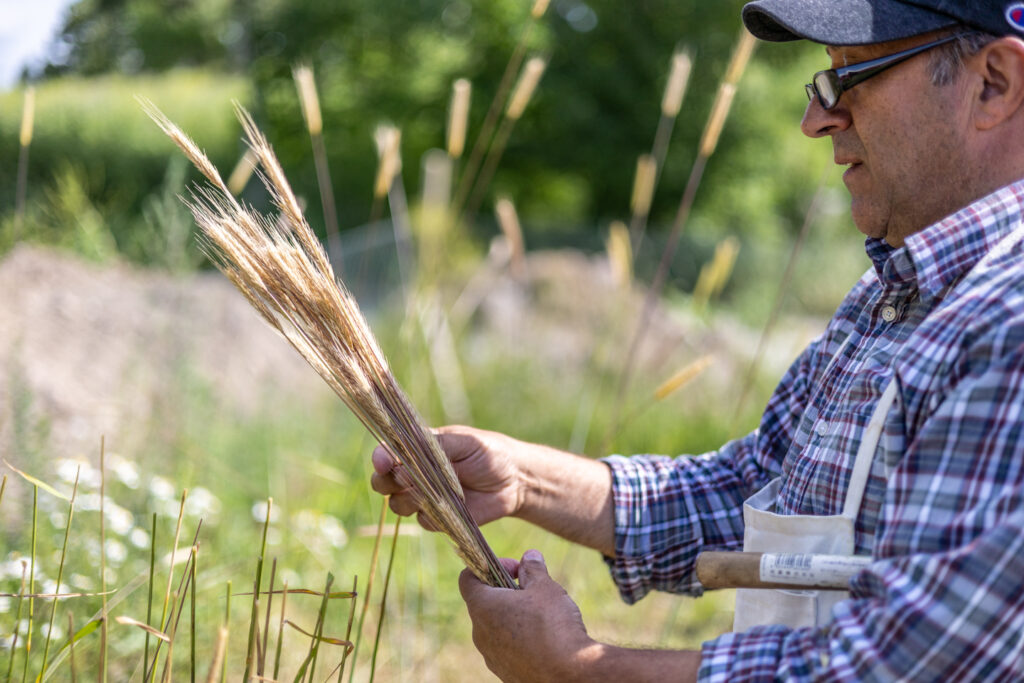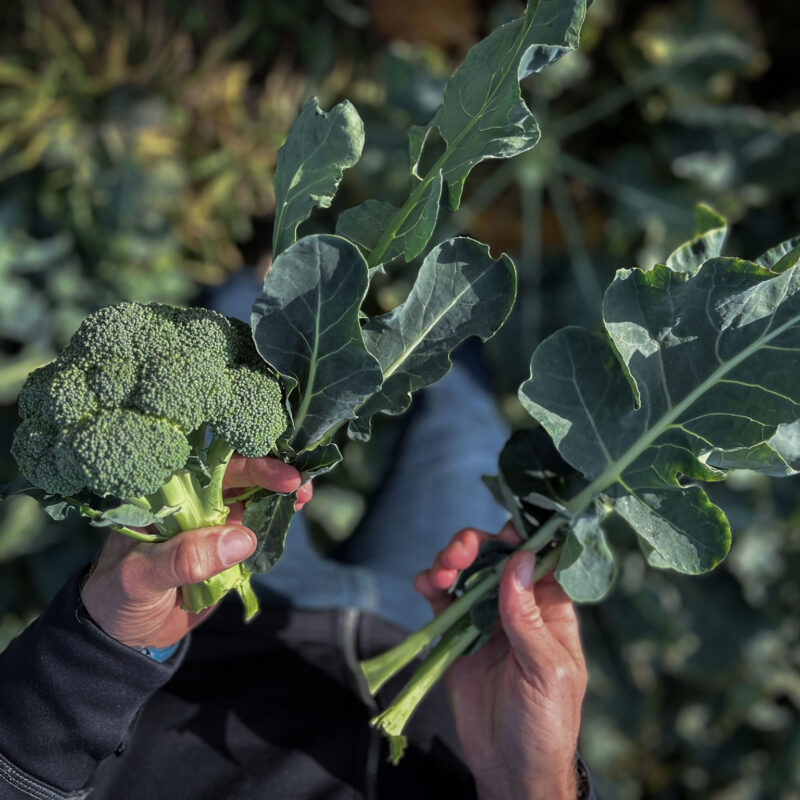Bulbous Barley – A Candidate to Be the World’s First Perennial Barley Crop
Perennial grain crops grow and give yield for several years at the same place without requiring to be sowed each season. These are potentially novel crops with a range of environmental and economic benefits. Axfoundation is now collaborating with the Swedish University of Agricultural Sciences (SLU) in their ground-breaking research at Torsåker Farm, to develop the world's first perennial barley crop – the bulbous barley. In an extensive plant breeding program, perennial relatives of barley are adapted with the aim of developing a crop that can thrive in a northern and central European climate.

Growing perennial plants such as bulbous barley could reduce carbon emissions from agriculture.
The Issue
Today’s cereal crops, like barley, have been improved through breeding for hundreds of years with such a strong focus on high yields that they have lost properties that now are important for adapting to climate change. This makes the food systems of the future vulnerable. Most of the cereals grown today in temperate climates are annuals and start from scratch every growing season: The land must be plowed, the soil sown, the crop established and then harvested – never to return unless the procedure is repeated and the farmer plows again. And a newly plowed field is especially vulnerable – there are no roots to bind the valuable soil and important nutrients are leached and end up in waterways where they contribute to ocean eutrophication.
Our Solution
Perennial crops store more carbon in the soil and reduce carbon emissions from agriculture. They are also more resistant to drought and water stress, and their larger root systems improve nutrient uptake from the soil. In addition, perennial crops help to reduce energy consumption and free up time for the farmer who does not have to sow and plow every season. However, the plant breeding of perennial cereals is still at an early stage. The yields are generally lower compared to annuals and the crops still have challenges like seed shattering. They are therefore currently not grown on a large scale. To overcome these challenges, several plant breeding programs are underway, and Torsåker Farm is the first place in the world for domestication and plant breeding of bulbous barley.

During the research trial at Torsåker Farm, seed shedding is prevented so that each plant can be studied in detail.
Our Work
At Torsåker Farm, Axfoundation is collaborating with the Swedish University of Agricultural Sciences (SLU) and has established a long-term field site for perennial grains, both bulbous barley and intermediate wheatgrass. Several populations of genetically different individuals of the barley are currently grown in trials and test plots in the farm’s fields. The domestication and plant breeding is run by SLU and the responsible researcher is Anna Westerbergh, Associate Professor in Genetics and Plant breeding at the Department of Plant Biology. The goal is to improve the agronomic traits, enhance the yield and adapt the plants to thrive in the northern and mid-European climates. Axfoundation’s contribution is also to work with chefs and bakers to identify the commercial potential of the perennial crops and explore which foods the cereals would be best suited for.
We are the first in the world to domesticate and plant breed the perennial barley relative Bulbous barley into a perennial barley. The location Torsåker farm and the collaboration with Axfoundation has been an incredibly important prerequisite for taking these steps.
– Anna Westerbergh, Associate Professor in Genetics and Plant Breeding, SLU
Bulbous Barley – From Idea to Plant Breeding
2013: A research group at SLU starts working on the domestication of perennial relatives of barley that can withstand cold winters. During 2013-2016, the survival and quantitative traits of a large set of perennial species are evaluated. Bulbous barley (Hordeum bulbosum) is identified as the best candidate.
2017: A domestication program for bulbous barley is set up at SLU.
2021: Selected plants from SLU are cloned and established at Torsåker Farm. These plants are studied based on different harvest traits and are the parents of the next generation.
2022: The perennial plants are further studied, and seeds are collected.
2023: The seedlings are propagated for further domestication. Anna Westerberg presented results from the perennial plant breeding in European context at the Global Agronomy megasymposium in st. Louis, USA during a session with the title Perennial grains – development around the world.
2024: Seeds from the best performing plants from 2023 are planted and grown for studies.
Results
Developing new crops takes time – even several years. A large genetic variation of plants with different geographical origins is evaluated and the best plants are selected and crossbred over several plant generations. An important prerequisite for this work is to be able to study the material in the same place over a longer period, and the research at Torsåker Farm has proved successful.
The plant breeding program at Torsåker Farm focuses on desirable traits of the bulbous barley such as high harvest yield, seed size, uniform ripening, resistance to shattering, and other harvest traits. Further development is done by plant breeders at SLU selecting the plants with the most desirable traits. These individuals are then crossbred, and seeds are planted to produce the next generation of improved plants. These in turn become selections for the next improved parent generation.
Based on extensive data, the first selection of the best perennial barley parent plants was made in 2021. They were cloned and planted in trials at different locations on Torsåker Farm. Seeds from the crossbreeding of these plants were harvested by hand from individual plants in 2022. Plants from these seeds were planted in the summer of 2023 for further domestication. In 2024 this work will continue using seeds from the best performing plants.
Did You Know…
- Bulbous barley has a wide geographic distribution. It can be found along the Mediterranean coast, the North African coast, and in the regions south of the Black Sea eastwards to Afghanistan and southern Tadzijkistan.
- Bulbous barley grows in a wide range of habitats – from dry grasslands to coastal sites.
- Bulbous barley comes with high adaptability to various habitats. This means that there may be good potential genetic resources for the development of perennial barley. This makes it particularly interesting in the development of perennial barley for cold temperate climates.
Find out more on SLU:s research on bulbous barley.
Read the science studies about perennial barley in cold climates:
Partners
The perennial barley research is run by Swedish University of Agricultural Sciences (SLU) in collaboration with the University of Copenhagen and Carlberg Research Laboratory, Copenhagen.























































